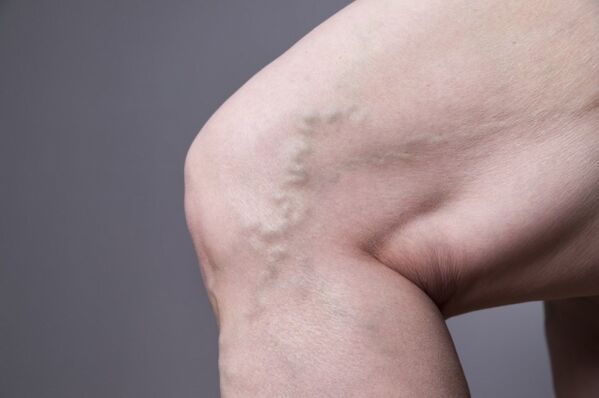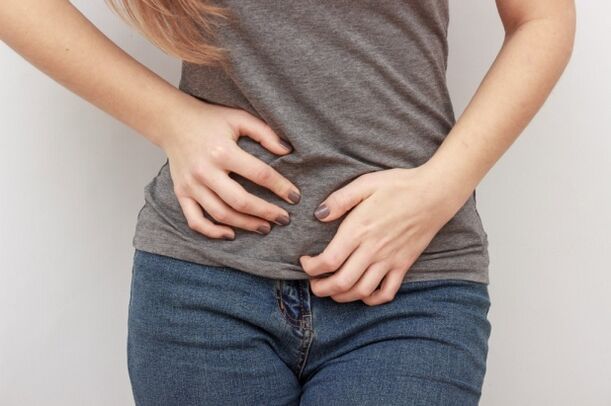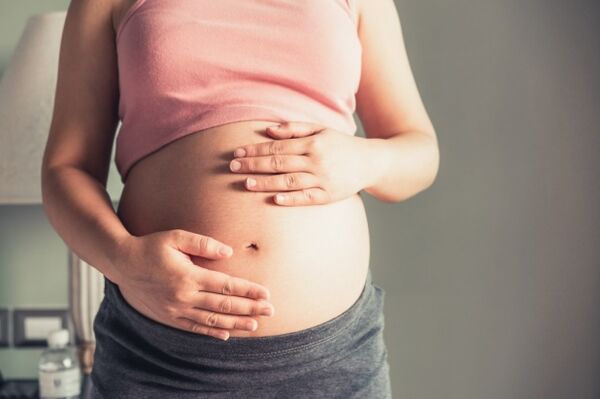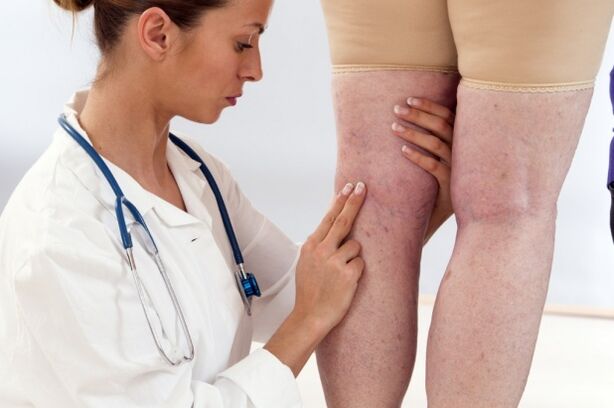Chronic venous insufficiency and varicose veins are widespread diseases: according to statistics, every third person faces in developed countries.The special risk group includes representatives of the right sex, to whom this pathology gives physical and psychological discomfort.In this article we will consider why vascular diseases occur in women, what are their signs and symptoms, what to do for treating and preventing this disease.
Varicose veins: Causes of varicose veins in women
According to statistical data, men are less likely to suffer from varicose veins than women whose vessels of which occur 1.5 times more often.What caused the gender characteristic of this pathology?

- Characteristics of hormonal background.During the monthly cycle, the woman's hormonal background is subject to fluctuations, and during pregnancy, childbirth, lactation and menopause, these changes become even more significant.The ratio of female sex hormones (estrogen and progesterone) has a direct effect on the condition of the vascular walls and blood viscosity.
- Hormone therapy.Combined reception of oral contraceptives of hormonal therapy and hormonal background intake, thereby provoking a change in the ratio of estrogen and progesterone in the body.
- Wearing shoes on the heels and tight pants.Unknown shoes, tight interiors and jeans - all this provokes a violation of blood flow to the lower extremities and pelvis, leading to the development of varicose veins.
In addition, exclusively female, prerequisites for the development of pathology, varicose veins in women can provoke the following factors:
- Genetically defined predisposition.According to statistics, a tendency for varicose veins is observed in 60% of cases if one of the parents suffers from this pathology.
- Considerable excess weight.Obesity is one of the factors in the appearance of varicose veins, as the lower extremities suffer increased pressure.
- Excessive foot load.If you are professionally engaged in running, jumping or raising energy, useful conditions are created for developing problems with veins.
- Disruption of blood circulation caused by a fixed position.If you spend most of the day sitting or standing, this is a serious prerequisite for developing vein diseases.
- Unstable food.A diet, poor fiber, vitamins and trace elements, leads to disorders affecting the blood vessel walls and blood composition.Moreover, an unbalanced diet can cause constipation, which are also able to lead to changes in the veins - in particular, in the varicose veins of the pelvis.
- Diseases of endocrine and cardiovascular systems.Disordishes endocrine disorders provoke changes in the hormonal background, which, in turn, become prerequisites for the development of varicose veins.Cardiovascular pathologies (in particular hypertension) also provoke the development of problems with the veins.

Varicose veins of pelvic veins in women
The pathological expansion of pelvic vessels is a common problem, which faces 15-25% of women of reproductive age.This disease is often mistaken for infectious and inflammatory processes that are localized in the reproductive organs of the female genitourinary system.With regard to the diagnosis made incorrectly, inappropriate treatment is described and the patient does not receive relief.Consequently, the problem of adequate varicose vein diagnosis and therapy of the pelvis is an urgent problem of modern phlebology and gynecology.
Blood supply to the pelvis organs occurs due to the uterine and ovaries, as well as venous-vaginal, bubble-vaginal, scary, rectum plexus, etc.The cause of varicose veins of the pelvis in women is to violate blood flow to these vessels.It is usually caused by blood sticking, which may be due to the following premises:
- The sitting way of life;
- Previously transferred gynecological diseases;
- hormonal background violations (in particular - high estrogen level);
- a story of pregnancy and childbirth;
- Congenital and acquired connective tissue violations (that is, a disadvantage of collagen).
Opinion is an expert feature of this vein disease in women is the presence of chronic pelvic pelvic syndrome.It is represented by pain in the lower abdomen, radiating in the pubic area, sacrum and claws.
The roof of pain usually falls in the second half of the menstrual cycle, complemented by severe premenstrual syndrome and dismenorrhea.Disordishes psychosomatic disorders can join the symptoms mentioned.

As mentioned above, the diagnosis of pathology is difficult in that the symptoms of this vein disease in women can be mistakenly interpreted as signs of purely gynecological problems.Therefore, to make the correct diagnosis, transvaginal ultrasound, dopplerography, phlebography, in some cases, diagnostic laparoscopy will be required.
For the treatment of varicose veins of a small pelvis, a conservative and operational approach is used.
In the first case, the purpose of therapy is to increase the tone of the venous walls, the normalization of the nature of blood flow and blood viscosity.To solve these problems, patients are prescribed venotonics, performing hiruterape, ultrasound and magnetotherapy sessions, as well as exercises of exercise therapy.If conservative therapy of this pelvic disease is ineffective, surgical intervention - sclerosis or embolism with veins in pregnant women is performed.
Problems with Vienna in pregnant women
Varicose veins are the problem of most pregnant women.This is due to the changes that occur in the expected mother's body during gestation.During this period, there is a complete restructuring of the hormonal background, which is directly related to the condition of the blood vessels.For example, the growth of estrogens leads to changes in the structure of the muscle layer of the venous walls and the enlargement of the blood vessels.

In addition to the hormonal changes that accompany the gestation period and the birth of a baby, pregnancy and childbirth can provoke the development of vein diseases in pregnant women for other reasons.First of all, this is an increase in body weight and the concomitant increase in load at the lower extremities, as well as the excessive stress a woman at work experiences during work.
During pregnancy, there is an increase in the total volume of circulating blood, which occurs due to an increase in the contents of plasma and red blood cells.
Vein diseases in women: symptoms and signs
Depending on the development phase, the varicose veins in the foot manifest in different ways:
- The initial stage of the pathological process is easy to lose, as its manifestations are usually minimal.Small spider veins appear on the legs, in the evening there is a small feeling of discomfort, and by the end of the day there can be slight swelling.Even if the clinical picture described does not cause special concern, as soon as you experience these symptoms, it is recommended to consult a doctor.
- If the disease was not found in the initial phase and treatment did not start in time, problems with veins in women worsen.The venous network is becoming more pronounced, the characteristic joints and cereals are clearly distinct under the skin, swelling and feeling of explosion at the lower extremities cause serious discomfort.
- If the disease was not treated or treated inefficiently, it goes into a neglected form.The affected veins are highly pronounced under the skin, there are constant edema, at night convulsions occur, the skin in the ankle area can change color and covered with trophic ulcers.
Venus diseases in women: Treatment
There are two main approaches to solving this problem: conservative and surgical.The first of them is usually used in the initial stages of the development of pathology, while the second is justified to combat later stages of the disease.

Conservative therapy involves taking medication, using funds for external use, physiotherapy sessions by visiting, coating clashes, correction of physical exercise, daily routine, food and drinking regimen.In addition, you can use additional tools to combat varicose veins - for example, Norman® leg cream.Its regular application to the lower extremities helps to get rid of swelling, fatigue, severity and discomfort in the legs, eliminating night seizures, and a decrease in vascular pattern expression.
Due to its natural composition, the cream can be used during pregnancy.
Surgical intervention is aimed at completely or partial removal of varicose veins.Modern vascular surgery can provide the following types of operations:
- Combined phlebectomy.
- Laser coagulation.
- Radio frequency coagulation.
- Sclerosis.
If we are talking about the treatment of vein diseases in women 50-60 and in patients with older, surgical intervention is usually not performed, as it is a stress for the body.























